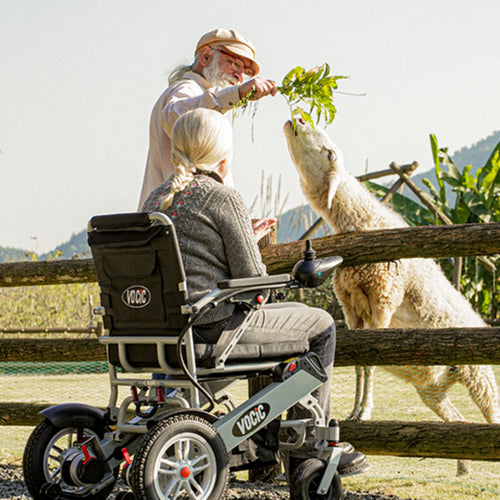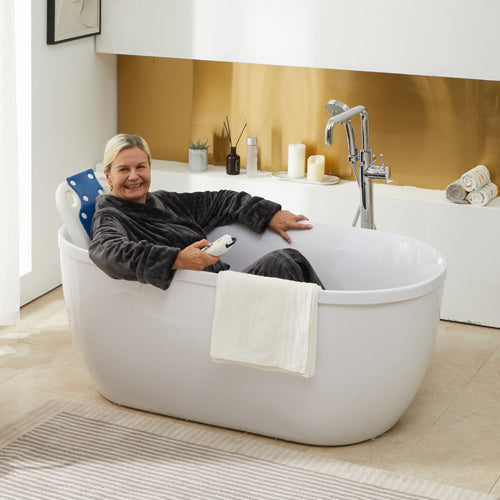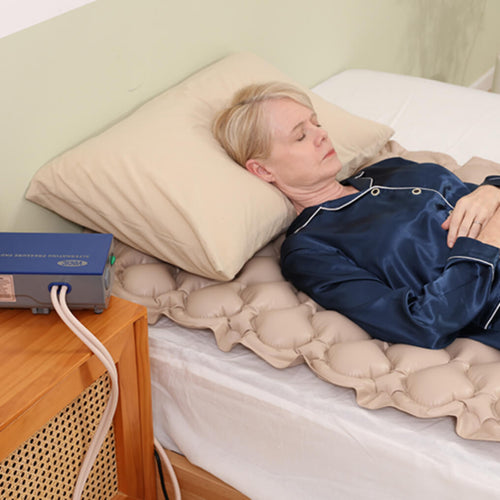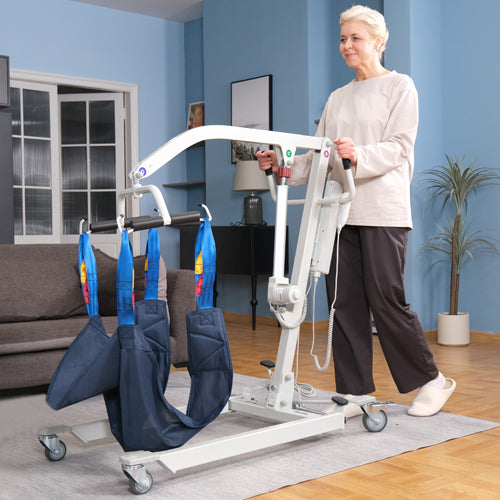Understanding the features of rollator mobility aids is important for those seeking enhanced mobility support. This guide explores the basic information and uses of walking aids, clarifying their design and benefits for people with mobility impairments.
What Is a Rollator Walker?
A rollator is a mobility aid designed to assist individuals with walking or moving around, especially those who may have difficulty with balance or strength. Unlike traditional walkers, rollators are equipped with wheels, making them easier to maneuver and providing more freedom of movement. They typically feature handlebars for support and often come with built-in seats for added convenience.
The prices of utility rollator walkers on the market today vary widely. Metal rollator walkers start at $20 and go up to $500 for high-end models from Rubbermaid Commercial Products. Plastic rollator walkers range in price from $100 to $400, while folding and portable rollator walkers start at around $23. Consider weight capacity, materials, and features when choosing to ensure the rollator walker fits your budget and requirements.
The Composition of Rollator Walker
Rollator walkers are equipped with a range of features that enhance mobility and provide essential support for individuals with walking difficulties. Understanding the key components and their significance can help users make informed decisions when selecting a rollator walker.
- Wheels: Rollator walkers are equipped with wheels, typically four, which allow for smoother movement compared to traditional walkers.
- Handlebars: They have handlebars that provide a comfortable grip for the user, offering support and stability while walking.
- Brakes: Many rollator walkers are equipped with hand brakes, allowing the user to control their speed and come to a stop when needed.
- Seat: Some rollator walkers feature a built-in seat, providing a convenient resting place for the user during walks.
- Storage: Many rollator walkers come with a basket or pouch attached to the frame, providing storage space for personal belongings or shopping items.
- Foldable: Most rollator walkers are foldable, making them easy to transport and store when not in use.
What Are the Types of Rollators Walker?
When considering the various types of rollators available in the market, it's essential to understand the distinct features and functionalities that each type offers. Rollators are designed to cater to diverse mobility needs, and selecting the most suitable type can significantly enhance an individual's walking experience.
Below are a few examples of the types of rollator walkers, each with unique features to meet the different needs of the user.
1. Three-Wheel Rollators
These rollators have three wheels, providing a more maneuverable option for navigating tight spaces. They are typically lighter and more compact than four-wheel rollators.
2. Four-Wheel Rollators
Four-wheel rollators offer stability and support with four wheels, making them suitable for outdoor use and rough terrain. They often come with additional features like seats and storage baskets.
3. Folding Rollators
Folding rollators can be collapsed or folded for easy storage and transportation. They are ideal for individuals who need to travel frequently or have limited space at home.
4. Bariatric Rollators
Bariatric rollators are designed to support heavier individuals, with sturdier frames and higher weight capacities compared to standard rollators.
5. Rollators with Seats
Some rollator walkers come with built-in seats, allowing users to take a rest whenever needed during walks. These are particularly useful for individuals who may tire easily or require frequent breaks.
6. All-Terrain Rollators
All-terrain rollators feature larger wheels and rugged tires, making them suitable for outdoor use on uneven surfaces such as grass, gravel, or dirt paths.
8. Pediatric Rollators
Pediatric rollators are designed specifically for children or smaller individuals, with adjustable height settings and colorful designs to appeal to younger users.

What Is a Rollator Walker Used For?
Rollators are used in various settings, including at home for daily activities, outdoors for walks, in shopping areas for errands, and within medical facilities for rehabilitation exercises, providing mobility support and stability for users.
Who would love to use rollators?
- Elderly individuals: As people age, many experience issues with joint wear, osteoporosis, and other age-related conditions that make mobility challenging. Rollators help them maintain balance while walking and reduce the risk of falling.
- Rehabilitation patients: For those who have recently undergone surgery or suffered severe injuries, rollators can serve as a transitional aid. They help patients better engage in walking exercises during their recovery period, gradually regaining their mobility.
- Individuals with mobility issues: This includes people who are mobility impaired due to muscular diseases, neurological conditions, limb disabilities, etc. Rollators provide the necessary support, helping them maintain a level of independence in their daily lives.
Rollators provide convenience and safety for individuals who need extra support. When selecting a rollator, it is important to consider the specific needs of the user, such as weight capacity, adjustability, wheel size, and type, to ensure that the rollator chosen meets both the physical requirements of the user and is appropriate for the environment in which they find themselves.
How to Choose the Right Rollator Walker?
Choosing the right rolled walker involves considering several key factors to ensure it meets the user’s mobility needs, comfort, and safety. Here are some essential aspects to consider:
- Weight Capacity: The weight capacity of boosters varies depending on the material of manufacture, design, and model. Generally, light-duty boosters have a weight capacity of around 100 lbs to 300 lbs, medium-duty boosters have around 300 lbs to 500 lbs, and heavy-duty boosters possess more than 500 lbs. The exact weight capacity depends on the type and purpose of the booster, and it is recommended to check the product specifications to make sure it meets your needs before purchasing.
- Height Adjustability: The handles should be adjustable to match the user’s height, allowing for a comfortable upright posture. Ideally, when standing upright, the user's wrists should align with the top of the rollator handles.
- Wheel Size: Larger wheels navigate outdoor terrains and obstacles more easily, while smaller wheels may be sufficient for primarily indoor use.
- Number of Wheels: Four-wheel rollators offer more stability and are generally equipped with a seat and brakes. Three-wheel models are more maneuverable in tight spaces but may offer less stability.
- Seat and Backrest: If the user needs to rest frequently, choose a rollator with a comfortable, sturdy seat and backrest.
- Brakes: Brakes for pushchairs include manual, pedal, automatic, and electric types. Manual brakes require manual operation to lock or release the wheels, while pedal brakes control the locking and releasing of the wheels by stepping on a pedal. Automatic brakes automatically start or stop based on the vehicle's motion, while electric brakes are operated by electricity. Factors such as personal preference, usage needs, and convenience should be considered when choosing a brake type.
- Storage Options: Many rollators come with built-in baskets or pouches, which are convenient for carrying personal items.
- Brands: There are many suppliers of this product on the market, but not all of them are as good as VOCIC. All of our products are made of high-quality materials, and our after-sales service is widely praised. Welcome to buy.
By carefully considering these factors, you can select a rollator walker that best suits the user's needs, ensuring greater independence, mobility, and safety.

How to Maintain Your Rollator Walker?
Regular maintenance checks and timely repairs can prevent accidents and make using the rollator more comfortable. Here are some key maintenance tips:
- Clean Regularly: Wipe the frame and seat with a damp cloth to remove dirt and grime. For the metallic parts, you can use a mild detergent diluted in water. Avoid harsh chemicals that can damage the finish or materials.
- Check the Brakes: Brakes are vital for safety. Test them regularly to ensure they engage properly and hold the rollator in place when applied. If the brakes are loose or not functioning correctly, adjust or replace them as needed.
- Inspect the Wheels: Look for signs of wear and tear on the wheels. Ensure they rotate freely without any wobbling or squeaking noises. Replace worn-out wheels to maintain smooth mobility.
- Tighten Loose Screws and Bolts: Periodically check and tighten any loose screws and bolts to prevent the rollator from becoming unstable. Use the appropriate tools to avoid stripping the screws.
- Lubricate Moving Parts: Apply a silicone-based lubricant to the wheels and any other moving parts to ensure smooth operation. Avoid using oil-based products as they can attract dirt and debris.
- Adjust the Height as Needed: Make sure the handles are at the correct height for comfortable use. The handles should align with the user's wrists when they stand upright. Adjust as necessary, especially if multiple people use the rollator.
- Check for Rust: Inspect the frame and other metallic parts for rust, especially if the rollator is used outdoors. Treat any rust spots immediately to prevent spreading.
- Storage: Store the rollator in a dry, clean place to avoid exposure to damp conditions that could lead to rust or deterioration of the parts.
By following these maintenance tips, you can help ensure your rollator walker remains a reliable aid for mobility and independence.
Conclusion
In short, the Rollator Walker is a tool to increase mobility and independence for people with mobility issues. Its wheels, adjustable handles, and built-in seat meet the different needs that users obtain in their daily activities. Not only does it provide physical assistance, but it also promotes mental health. Users are encouraged to explore a variety of rollator options to ensure that it meets their needs, enabling them to choose the right rollator for their lifestyle and mobility goals.









